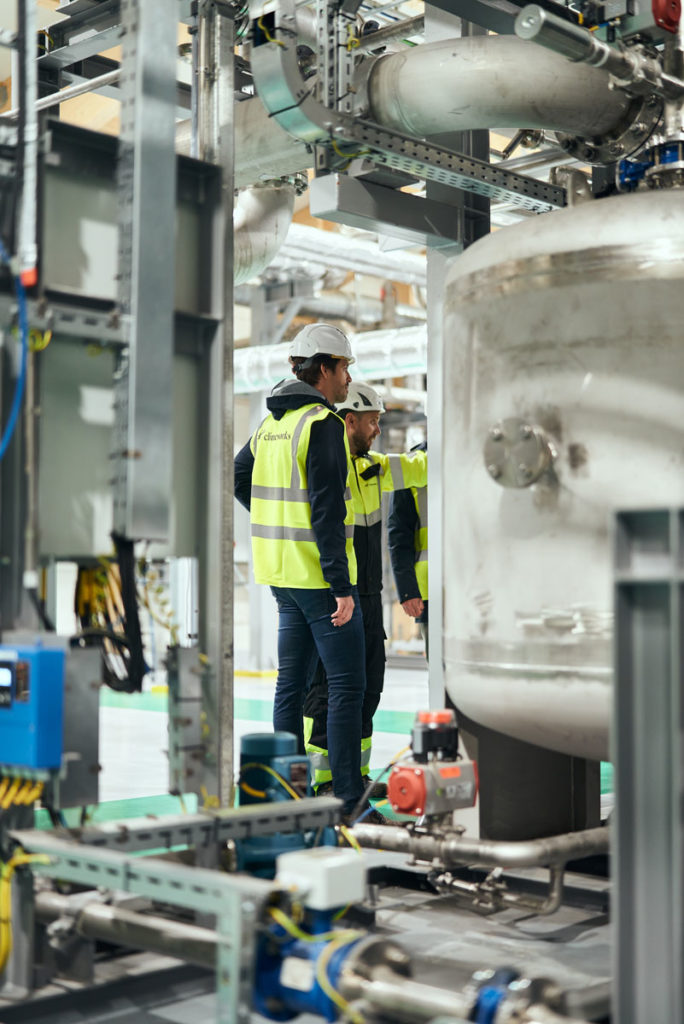The initial idea came from research by Jan Wurzbacher and Christoph Gebald. While they were studying at the Federal Institute of Technology in Zurich, the two engineers developed a ground-breaking filter that can be used to chemically capture the greenhouse gas CO2 out of the atmosphere. An initial demonstration model, with a separation capacity of two tonnes of CO2 a year, was set up at the Swiss Federal Laboratories for Materials Science and Technology (Empa) in Dübendorf. A few years later, a pilot demonstration plant in Hinwil near Zurich achieved 900 tonnes. The Orca plant in Iceland, opened in 2021, had a capacity of up to 4000 tonnes, and the Mammoth plant in the same location can capture up to 36,000 tonnes.
The numbers tell the story: a single bold idea has produced a technology with enormous economic potential. Climeworks is behind the two commercial plants in Iceland. The 300 ‘Climeworkers’, as they call themselves, are committed to an ambitious scale-up plan: a plant capacity of several megatonnes by 2030 and being on track to a gigatonne (one billion tonnes) capacity by 2050. By way of comparison, global CO2 emissions from oil, gas and coal today amount to around 30 gigatonnes.
Climeworks technology directly counteracts climate change: the greenhouse gas is removed from the atmosphere using filters and can then be permanently stored underground. In Iceland, partner company Carbfix injects the gas in dissolved form into the subsoil, where it reacts with the basalt rock and, through mineralisation, becomes a solid that remains permanently in the soil. Alternatively, the captured gas can be used for processes that require CO2, such as the production of synthetic fuel. Climeworks plants are powered by renewable electricity and low-temperature heat, for example from waste incineration, and they emit only about one tenth as much CO2 as they strip from the atmosphere.
The plants are based on a modular design, making the technology easily scalable. The business model also has great potential for growth: Climeworks is financed by the money that private individuals and companies pay to have all or part of the CO2 they produce captured from the atmosphere. Thousands of private individuals and well over a hundred companies (including Microsoft, UBS and Swiss Re) are already taking part.

Climeworks AG